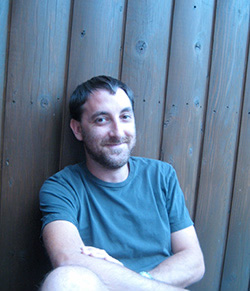|
When I first conceived of a life as a fiction writer I began, naturally, to read fiction with an eye toward learning my craft. My tastes at age sixteen were not terribly literary—I had a fondness for Dick Francis racing mysteries and John Carter, Warlord of Mars—but it was enough to assimilate the rudiments of plot and setting. As my choices grew more sophisticated, so did my writing. A lifetime of reading fiction in order to inform my own writing seemed to lie comfortably ahead of me.
My approach changed just a year later, when a college professor dropped a rather offhand remark into a liberal arts setting already roiling with the possibilities of philosophy, sociology, political science, and other subjects I had never encountered in my rural New York high school. "Your writing is fine," she said, "but if you want to have a decent vocabulary, you need to start reading poetry."
That night I opened my copy of the thick Norton Anthology of American Literature, which I had bought used at the college bookstore mostly because I liked the crinkly feel of its pages—so thin, but so full with great writers, I imagined. I flipped the pages and paused, for no reason that I can recall now, on Gwendolyn Brooks. I read the first line of "The Bean Eaters."
They eat beans mostly, this old yellow pair.
There it was, an everyday word given new life and radiance when set against the skin of an elderly African-American couple: yellow. I understood what my professor meant about extending my vocabulary, not just with new, fancy words, but by going back to what I already knew and making each word work harder. I understood how important it was to defamilarize each word we use, shake off its rust and let it shimmer with meaning. I have tried to write that way ever since.
Fast forward twenty years. When Dinty Moore and I envisioned the book that would become Lit From Within, we were animated by this idea on a larger scale. We had noticed that though many books on writing and craft still broke down along genre lines—books for fiction writers over here, poets there, and more and more for writers of creative nonfiction—some of the most interesting and fresh thinking about writing came when writers responded across genre, informed by their own experience, their own constraints and possibilities. We found that in our experiences hosting writers on our home campuses of Ohio University, we loved when, say, a poet at our literary festival would cross-examine a memoir writer on her use of metaphor, or a nonfiction writer would challenge the value of fiction—with fiction writers in the audience, ready to respond.
As a result, we gave our contributors an unusually broad mandate—write what you feel passionate about, right now, regarding the art and craft of writing—trusting that the quality of the writers involved would carry us to places we would not reach otherwise. The results are exciting. There's Lee K. Abbott's funny, cantankerous "Thirteen Things about the Contemporary Short Story that Really Hack Me Off" just a few essays after Francine Prose's beautiful examination "Gesture," about developing characters through non-verbal communication. But there's also Robin Hemley's "Confessions of a Navel Gazer," which should challenge any writer's assumptions about how imagination works, in any genre. Or Mary Ruefle's "Someone Reading a Book is a Sign of Order in the World," which shows how a lifetime of polyglot, adventurous reading sustains the writer in all of us. Overall, as we write in our introduction, "The essays here are not limited or organized by genre, but instead are arranged to generate the unexpected collisions of meaning and inspiration that occur when one piece of good writing crosses another."
It's these collisions that challenge us to be better writers. In the meantime, I'm off to read a poem, or perhaps an essay. I hope I'll learn something.
|


